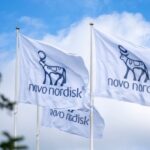Kailera Therapeutics has raised $600 million to take its lead obesity program into phase 3. The series B round continues the meteoric rise of Kailera, which exited stealth with $400 million and ex-China rights to a clutch of obesity candidates barely 12 months ago.
Bain Capital, an investor with a track record of making big biopharma bets, is behind Kailera’s emergence as a name to watch in obesity. After Bain’s life sciences division co-led Kailera’s $400 million series A last year, the investor’s private equity unit took the lead on the series B. The round will be fully funded at closing, giving Kailera the cash to run the sort of trials that are usually reserved for large companies.
The financing is one of the largest private biotech rounds of the year so far, with artificial intelligence drug discoverer Isomorphic Labs pulling in the same $600 million sum back in March.
Kailera will use the funding to run a phase 3 program for its injectable dual GLP-1/GIP receptor agonist KAI-9531. Talks with the FDA have informed the biotech’s plans to run two phase 3 trials in adults living with obesity or who are overweight with comorbidities, with and without Type 2 diabetes, and another study in adults living with a BMI of 35 or higher. Kailera is aiming to start the global phase 3 program this year.
KAI-9531 is advancing into pivotal studies on the strength of data that have led Kailera to predict the drug candidate could have best-in-category weight loss. Hengrui Pharma, Kailera’s partner in China, reported placebo-adjusted weight loss of 16.3% after 48 weeks in a phase 3 trial. Weight loss on the top dose of KAI-9531 was still rising at the end of the trial.
Related
Eli Lilly’s Zepbound, which hits the same targets as KAI-9531, came to market on the back of studies that linked the drug to weight loss of up to 17.8% after 72 weeks. The data made Zepbound the drug to beat in obesity. Bain and a clutch of other deep-pocketed investors are betting Kailera can rise to the challenge.
The size of the series B round positions Kailera to take KAI-9531 into phase 3 while advancing other drug candidates. KAI-7535, an oral small molecule GLP-1 receptor agonist, is set to start global studies on the basis of phase 2 results generated in China. Kailera said the candidate showed competitive weight loss. Lilly’s orforglipron is currently the leading oral GLP-1 small molecule in development.
Beyond those assets, Kailera’s pipeline includes an injectable GLP-1/GIP/glucagon receptor tri-agonist and a once-daily oral formulation of its lead candidate KAI-9531. The biotech also has rights to new formulations of licensed products and rights of first refusal over some Hengrui metabolic disease assets.
The delivery of positive data on the candidates would put Kailera in the shop window. Pfizer, a company with a known appetite for an obesity deal, agreed to buy Metsera for $4.9 billion upfront last month. The paperwork showed there may still be companies in the market for obesity drugs. Metsera received offers from two other companies—and spoke to several more—before accepting Pfizer’s buyout bid.



